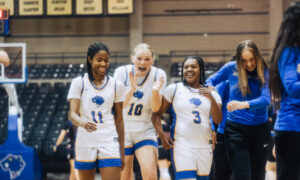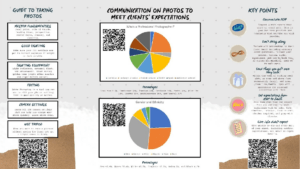In the journey of life, every day is a chance to discover something new, no matter how smart or intelligent we think we are. Whether it’s understanding ourselves better, learning from the people around us, or noticing the world’s wonders, there’s always something to learn. It’s like we’re wired to learn, whether we realize it or not.
In the dynamic world of sports, where split-second decisions and trained skills can make all the difference between victory and defeat, understanding how we process new information is essential. As an athlete, I’ve long been interested by the complexity of learning and processing information, intrigued by how it affects performance on the court. Traditionally, learning styles such as visual, auditory, and kinesthetic have been predominantly associated with academic pursuits rather than athletics. I invite you to accompany me on an enlightening journey as I delve into the captivating interplay of these very learning styles within the domain of sports. My goal is to uncover their profound influence on my personal learning journey and athletic achievements in women’s basketball.
The realm of learning styles is a complicated topic due to the lack of evidence. There is a prevalent belief in the effectiveness and matching learning styles with teaching methods to enhance academic success, despite the lack of supporting evidence [Newton, P.M., &Miah, M., 2017]. Another study suggests that tailoring teaching methods to a student’s auditory or visual learning style doesn’t necessarily impact their academic performance [Rogowsky, Beth A., Barbara M. Calhoun, and Paula Tallal; 2020]. However, this doesn’t dismiss the potential benefits of learning styles altogether. In fact, despite the absence of scientific evidence of the effectiveness of learning styles, in certain circumstances having insight to personal preferences and different styles of learning can be beneficial [Joseph, Lumy, Sajimon Abraham, Biju P. Mani, and Rajesh N; 20229]. For instance, I followed a multi-faceted approach to learning, as recommended by (Newton, Philip M., and Mahallad Miah. 2017), exercising auditory, visual, and kinesthetic methods to enhance athletic performance and retain crucial information more effectively.

As an athlete, I’ve always been fascinated by the different ways people learn and process information. I’ve noticed that my own experiences on the court align with various learning styles: visual, auditory, and kinesthetic. Recently, I decided to explore this topic further by examining how these learning styles impact my own performance and development as an athlete. Let’s explore the different ways we learn and how they shape who we are through this experience.
One day, during a crucial game, I found myself on the bench, watching intently as my teammates battled it out on court. As I was observing their movements and strategies, I realized how much I was learning visually. Every play, every maneuver, was like a lesson unfolding before my eyes. I made mental notes of what worked and what didn’t, storing away valuable insights for future reference. Learning from others’ mistakes helps me realize my own, and therefore helps me understand things from others’ perspectives too, not just mine. Seeing the bigger picture helps me past these small mistakes and shift my focus onto the next goal.

Watching the game from the sidelines provides an obvious advantage. It’s easy to see other players’ mistakes and envision better strategies and moves.
As I was catching my breath on the bench and following the game play-by-play, suddenly, the coach called me over for a one-on-one discussion before she put me in the game. As I was listening to her instructions and advice, I realized the importance of auditory learning in my athletic journey. Her words resonated with me, providing clarity and direction. I absorbed every instruction, eager to apply them in the game.

Now, on the court, I put my knowledge and insights into action. The coach’s guidance helped me focus as I took my position. I focused on the details she emphasized, like maintaining spacing, communicating with teammates, getting rebounds and staying aggressive on defense. As the game unfolded, I found myself instinctively making adjustments based on her advice. When an opportunity arose, I executed a play that we had discussed, feeling a rush of satisfaction as it played out successfully, following her instructions. More importantly, each decision felt inspired by the lessons learned moments earlier on the sidelines.
This experience highlighted the invaluable connection between listening to my coach and learning from others’ mistakes. As I continued to engage with the game, I realized that absorbing coaching in real time and applying it immediately was a powerful aspect for improvement.
The game was no longer just physical; it became a mental exercise where strategic thinking merged with physical execution and mental effort. These moments on the court became an opportunity to reinforce the lessons learned, contributing to my growth as an athlete. With each sprint, pass, and shot, I felt the principles of kinesthetic learning come alive. The physical sensations and muscle memory guided my movements, allowing me to perform at my best.

Furthermore, as I immersed myself deeper into basketball, I began to appreciate how kinesthetic learning enhanced my overall understanding and enjoyment of the game. Each movement, whether dribbling around defenders or setting up for a jump shot, was not just a mechanical action but a sensory experience. The tactile feedback of the ball in my hands and the coordination of footwork fed into my development as a player. Kinesthetic learning enabled me to focus my motor skills and spatial awareness on the court, translating theoretical knowledge into instinctual responses. Over time, this integration of physical sensation with strategic thinking not only improved my performance but also deepened my passion for the sport.
In the end, our team emerged victorious, but the real triumph was the realization that my journey as an athlete is not just about physical success—it’s also about understanding and embracing the different ways I learn which is the same for all of us. By recognizing the power of visual, auditory, and kinesthetic learning working together, I’m equipped to continue growing and evolving both on and off the field. The lessons I’ve learned and am practicing can be used by anyone that intentionally wants to further develop their own personal, professional and academic development. It just takes recognizing what we are learning visually, listening carefully and then practicing what we are learning so we can succeed. Doing this can lead to many victories!

[ 1. Rogowsky, Beth A., Barbara M. Calhoun, and Paula Tallal. 2015. “Matching Learning Style to Instructional Method: Effects on Comprehension.” Journal of Educational Psychology 107 (1): 64–78. doi:10.1037/a0037478.] [ 2. Rogowsky, Beth A., Barbara M. Calhoun, and Paula Tallal. 2020. “Providing Instruction Based on Students’ Learning Style Preferences Does Not Improve Learning.” Frontiers in Psychology 11 (February). doi:10.3389/fpsyg.2020.00164. ] [ 3. Newton, Philip M., and Mahallad Miah. 2017. “Evidence-Based Higher Education—Is the Learning Styles ‘Myth’ Important?” Frontiers in Psychology 8 (March). https://research.ebsco.com/linkprocessor/plink?id=585876af-f292-36d0-84e6-a94571b9ebad] [ 4. Nancekivell, Shaylene E., Priti Shah, and Susan A. Gelman. 2020. “Maybe They’re Born with It, or Maybe It’s Experience: Toward a Deeper Understanding of the Learning Style Myth.” Journal of Educational Psychology 112 (2): 221–35. doi:10.1037/edu0000366] [ 5. Joseph, Lumy, Sajimon Abraham, Biju P. Mani, and Rajesh N. 2022. “Exploring the Effectiveness of Learning Path Recommendation Based on Felder-Silverman Learning Style Model: A Learning Analytics Intervention Approach.” Journal of Educational Computing Research 60 (6): 1464–89. doi:10.1177/07356331211057816.]
Image citations
- Joan Dragonfly, Venn Diagram of 3 Learning Styles, June 8, 2017, photograph, Flickr, https://www.flickr.com/photos/joandragonfly/34372257313



3 comments
Natalia De La Garza
Your insights and storytelling are truly amazing, and you’ve created something that resonates deeply. I appreciate the effort you put into this, and it made a huge impact. Fantastic job!
Rhys Williams
I thoroughly enjoyed immersing myself in your exploration of the intersection between learning styles and athletic performance. Your personal reflection as an athlete adds a compelling layer to the discussion, shedding light on the intricacies of processing information in the dynamic realm of sports. The quote, “Traditionally, learning styles such as visual, auditory, and kinesthetic have been predominantly associated with academic pursuits rather than athletics,” resonates deeply, highlighting the shift in perspective as we explore how these learning styles impact athletic endeavors. I eagerly anticipate accompanying you on this enlightening journey through the lens of women’s basketball, uncovering the nuances of your learning journey and athletic achievements.
LEE
I like this job. I always am interested in playing sports and watching sports. When I saw the photo playing basketball I immediately clicked it. Thank you for sharing your thoughts and opinion in this article. And have a good work out and enjoy your work out. I wanted to play basketball too. If i were tall enough and made a lot of effort when I was young.